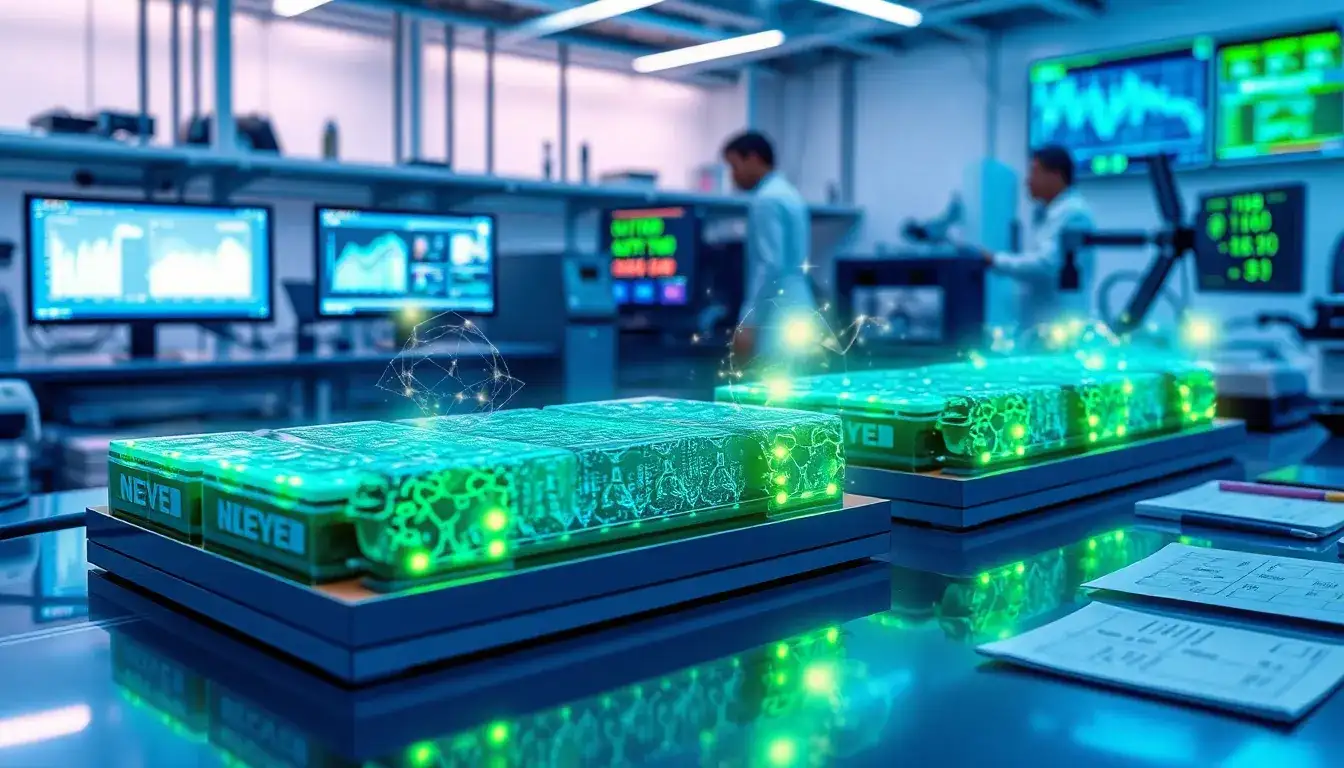Researchers Enhance Li-ion Battery Performance Using Surface Technology
In a significant advancement for lithium-ion battery technology, a research team led by Prof. Dongwook Han from Seoul National University of Science and Technology in South Korea has developed an innovative technique to improve the high-voltage LiNi₀.₅Mn₁.₅O₄ (LNMO) cathodes. By engineering a Li-vacant topotactic subsurface and adding a protective K₂CO₃ surface layer to the cathode particles, they have successfully enhanced the stability, longevity, and performance of Li-ion batteries. This breakthrough has the potential to transform energy solutions for electric vehicles, addressing the growing global demand for cost-effective and sustainable batteries.
Lithium-ion batteries are at the forefront of energy storage technology, but achieving high energy density coupled with long-term stability is essential for extending the usability of electronic devices. LNMO is recognized for its thermal stability and cost-effectiveness, making it a promising candidate for high-voltage cathodes. However, its application has been hampered by undesirable side reactions, such as electrolyte decomposition, which diminish performance over time.
In their pioneering study, Prof. Han and his team employed a dual engineering approach to boost the performance of LNMO cathodes. They created Li-vacant subsurface pathways to enhance lithium-ion migration and added a K₂CO₃-enriched protective layer to shield the cathode from electrolyte decomposition.
“To enhance the performance of LNMO cathodes, we introduced a K₂CO₃-enriched external surface and a partially delithiated subsurface of LNMO particles through a KOH-assisted wet chemistry method. The synergistic effect of these layers results in remarkable electrochemical charge/discharge cycling performance and increased thermal stability of LNMO cathodes,” explains Prof. Han, the lead author of the study.
The surface-engineered cathodes underwent a two-step preparation process. First, regular LNMO (R-LNMO) cathodes were synthesized using co-precipitation-assisted hydrothermal methods followed by solid-state reactions. Next, these R-LNMO cathodes were modified by treating the particles with an aqueous KOH solution, resulting in the formation of surface-modified LNMO, known as LNMO_KOH.
Testing of the LNMO_KOH and R-LNMO cathode particles revealed significant improvements in their physicochemical and electrochemical characteristics. The findings indicated enhanced thermal stability and superior energy storage in the LNMO_KOH particles. The cathodes demonstrated a discharge capacity of approximately 110 mAh/g with a 97% capacity retention after 100 cycles, a notable increase compared to the 89 mAh/g discharge capacity and 91% retention of untreated LNMO cathodes. Additionally, the engineered material showed potential for faster charging, with fewer impurities and increased porosity within its structure.
Reflecting on the broader implications of this research, Prof. Han noted, “Our technology is not limited to LNMO but can also be applied to commercial cathode materials, including high-performance Li[Ni1-y-zCoyMnz]O2 (NMC) and LiFePO4 (LFP). We believe this will advance the applications of batteries in large-scale electric vehicles and energy storage systems by enabling high energy density and exceptional safety.”
Original article by NenPower, If reposted, please credit the source: https://nenpower.com/blog/innovative-surface-technology-enhances-lithium-ion-battery-performance/



